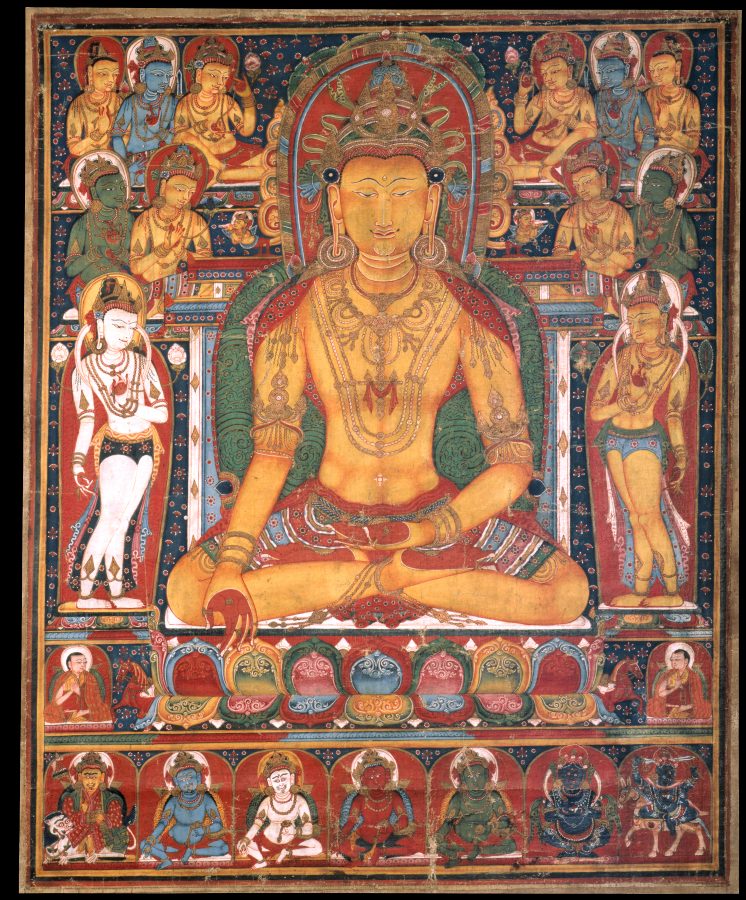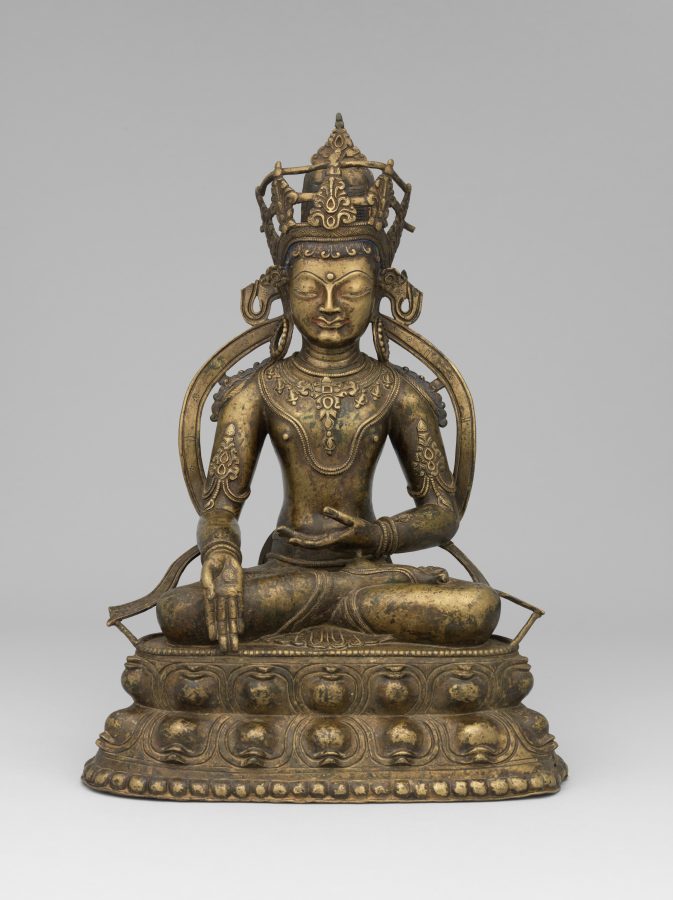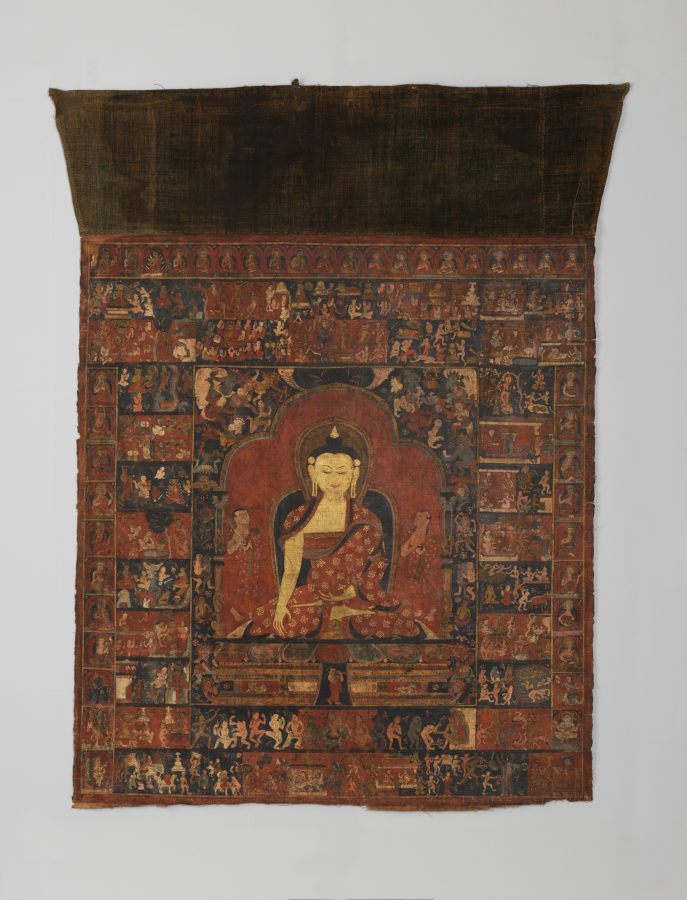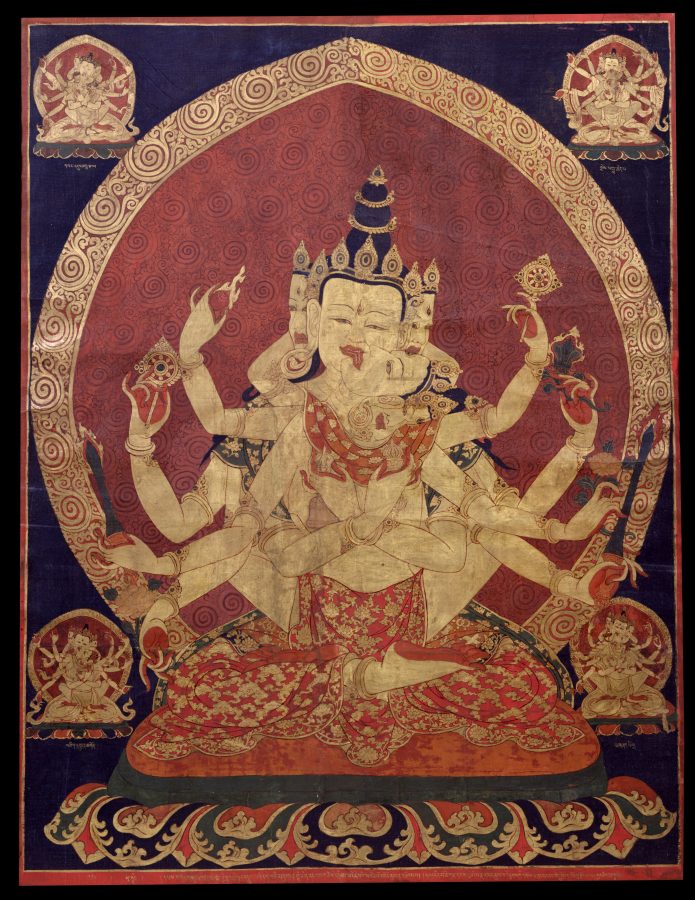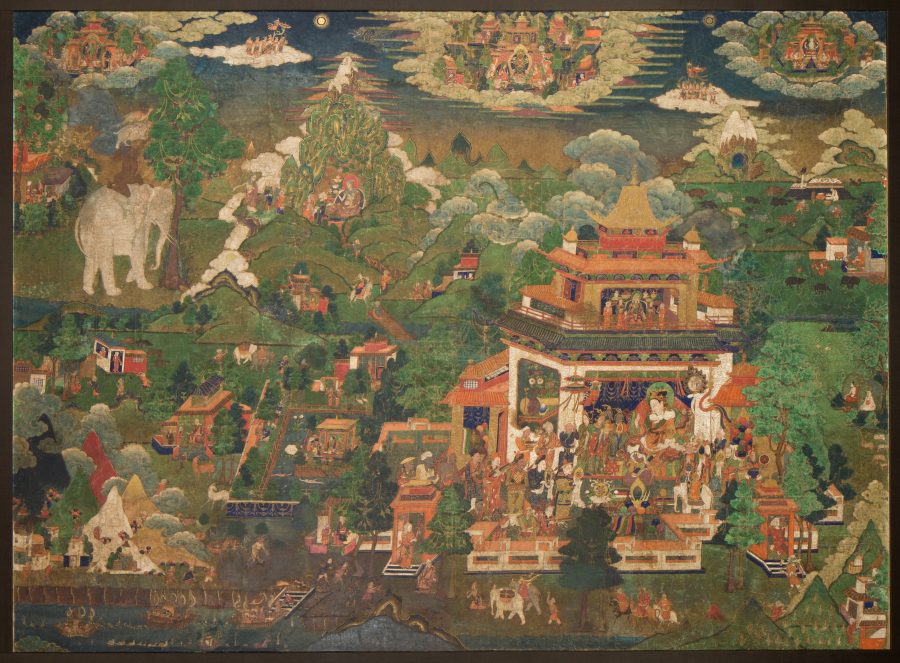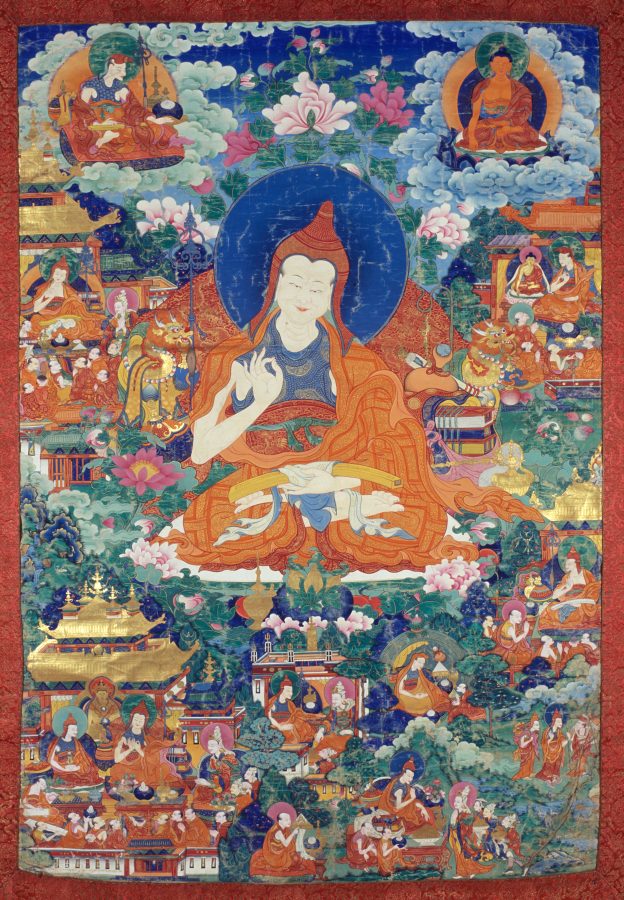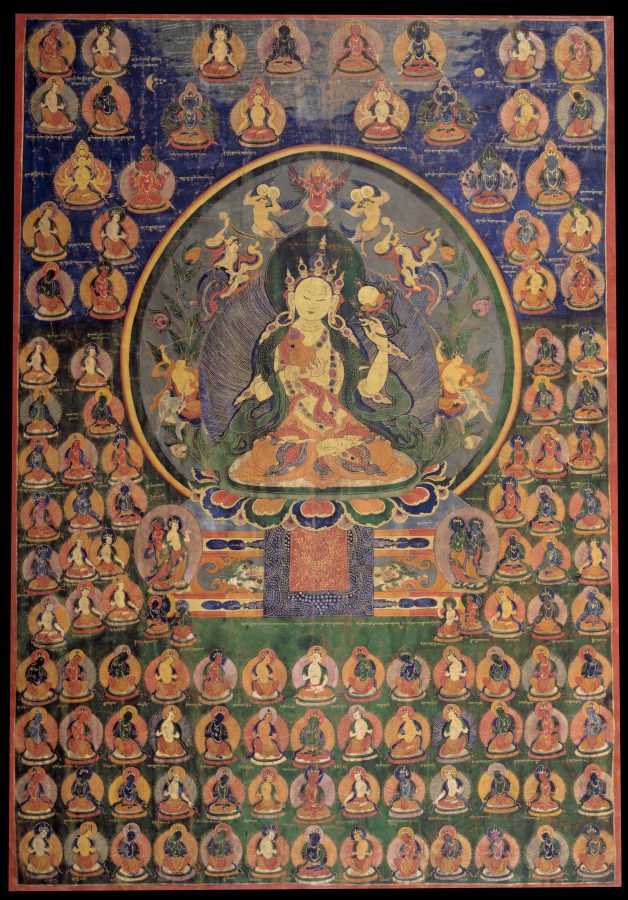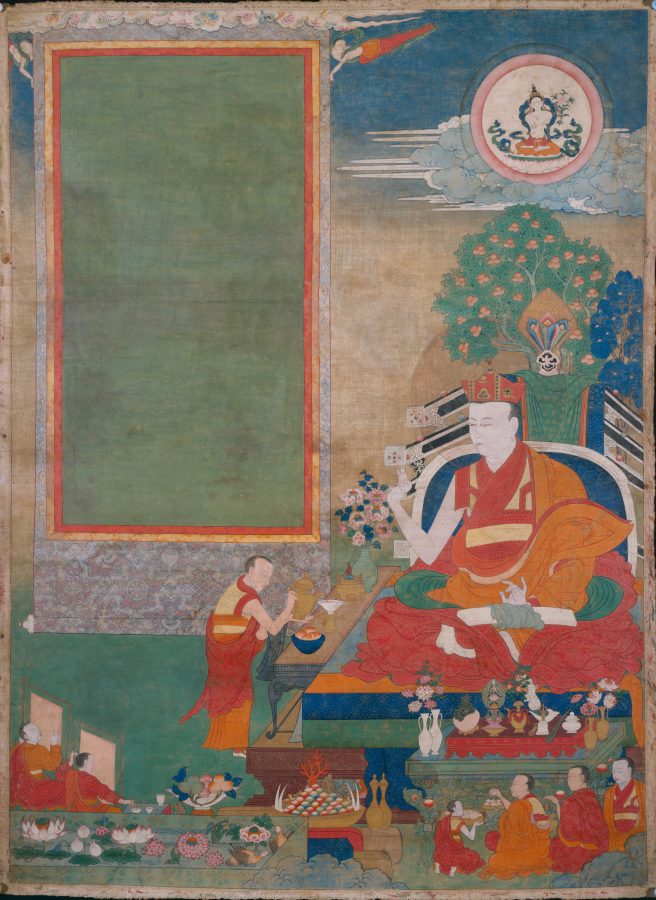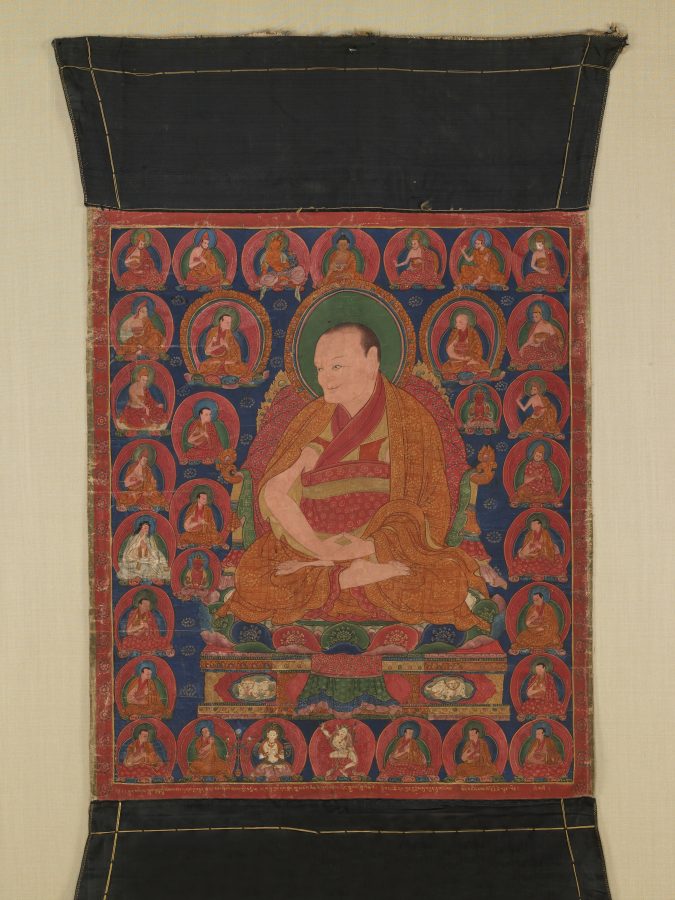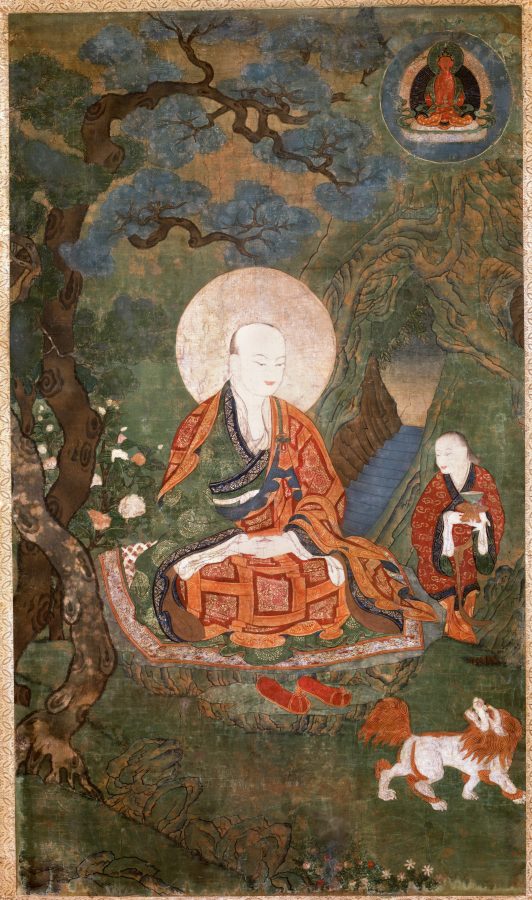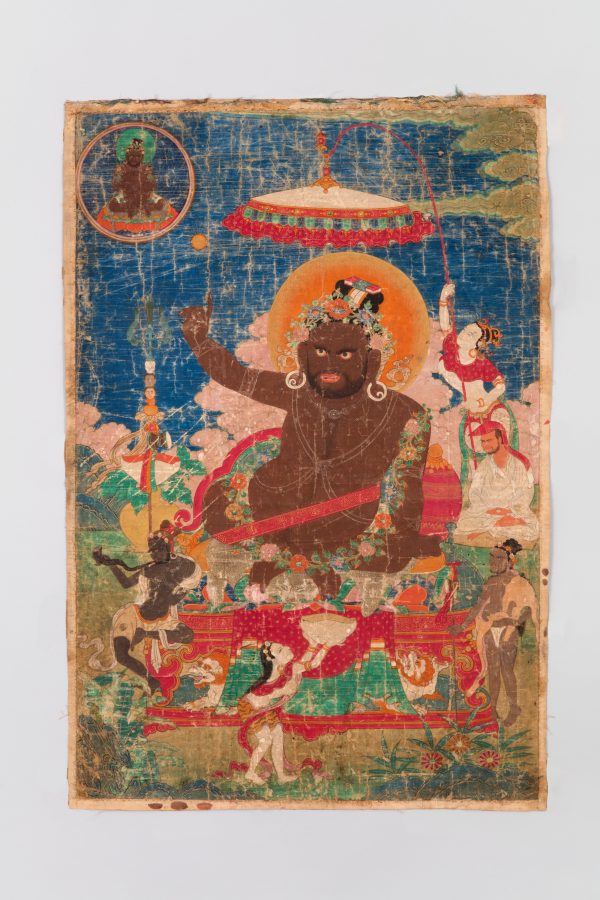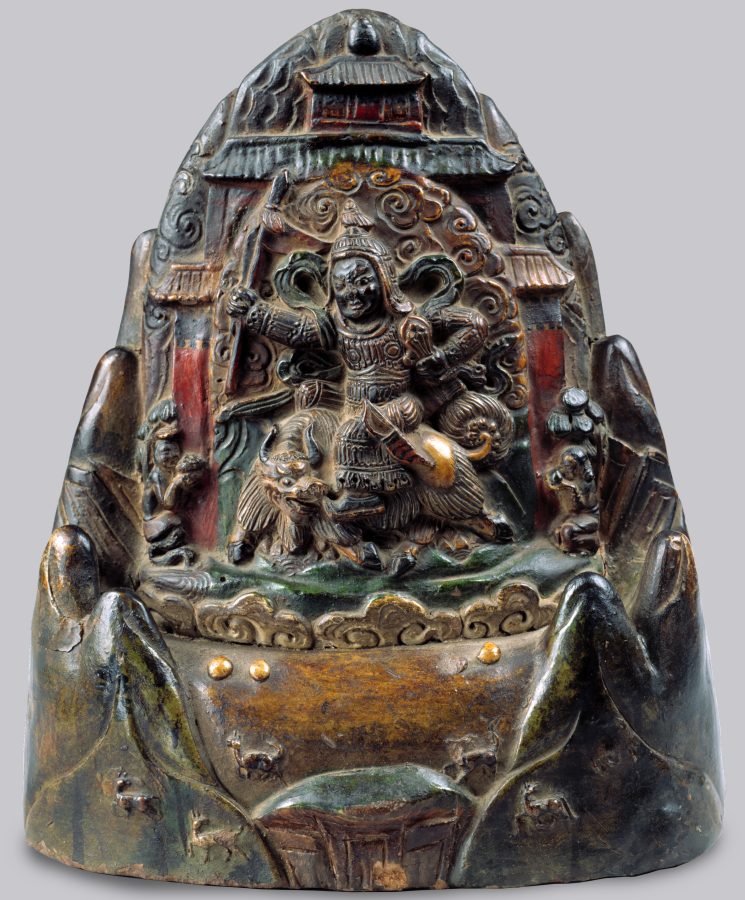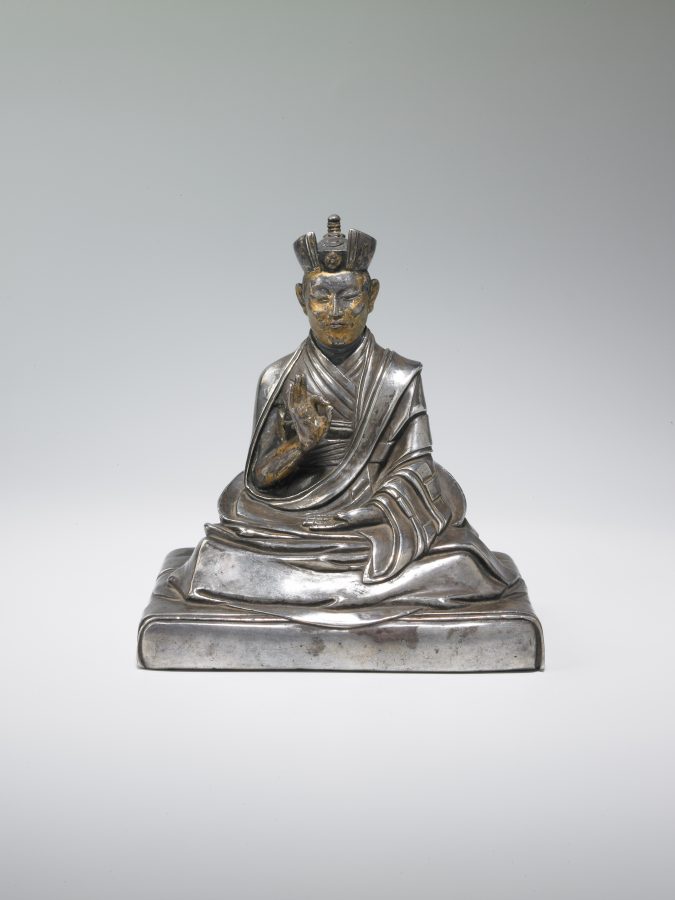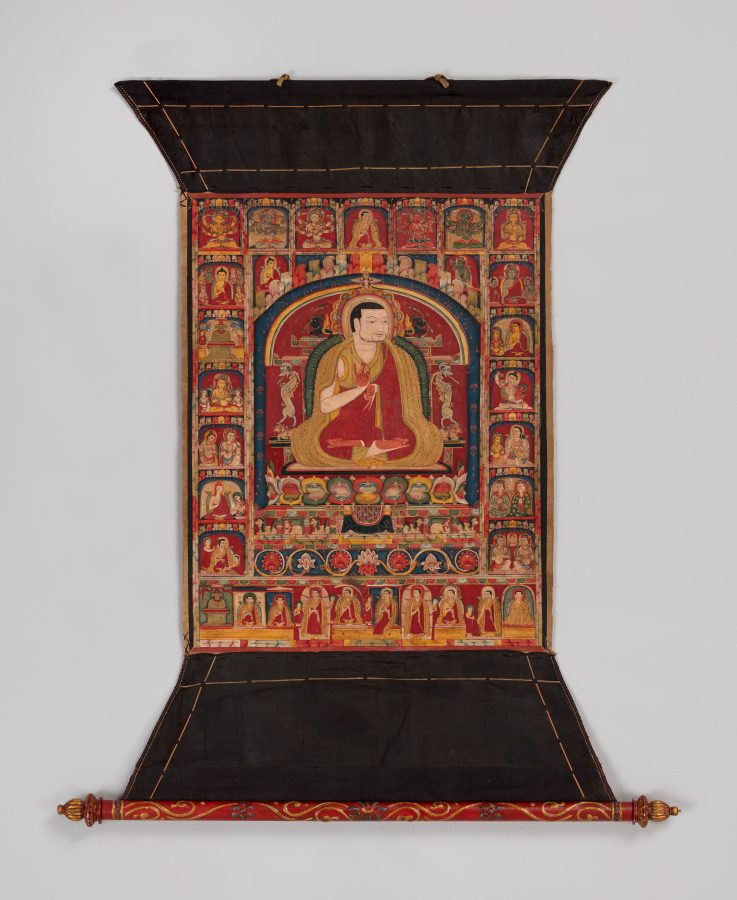Ngor Ewam Choden Monastery, Tsang Province, Central Tibet
ca. 1515-1535
Rubin Museum of Himalayan Art, Gift of Shelley and Donald Rubin
C2006.66.220
An inscription on the front of this painting identifies it as depicting Buddhashri (1339–1419), and unusually, it names the artist, “the supreme brush holder” Dorje Tseten.
The painting preserves several features of early Tibetan art into the sixteenth century, such as the dominant red palette, the Newar-inspired scrolling patterns, and the hierarchic symmetrical organization of the figures. Such early features continued unabated in the more conservative art tradition at the great artistic center of Ngor Monastery, even after much of central Tibet began embracing the new landscape styles with green and blue dominated palettes. More recent developments in Tibetan painting also appear, such as the main teacher’s Chinese-inspired seat and the emphasis on textiles.
Buddhashri was the Tibetan master who transmitted the key Sakya School “Path with the Fruit” (Lam dre) instructions to the founder of Ngor Monastery, Ngorchen Kunga Zangpo (1382–1456). This painting is from a larger set of eleven paintings commissioned by Lhachok Sengge (1468–1535), the ninth abbot of Ngor Monastery (tenure 1516–1534), an important patron of the arts.
See full collection record
Learn more about Nepalese style paintings (Beri) in Tibet


